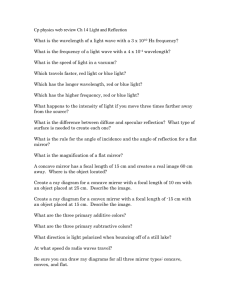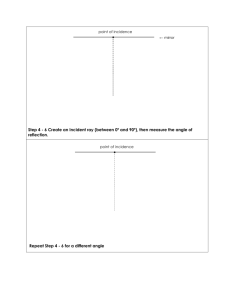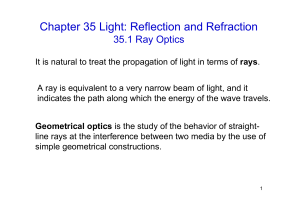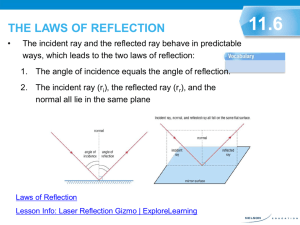Light travels in straight lines except: When it is reflected, refracted
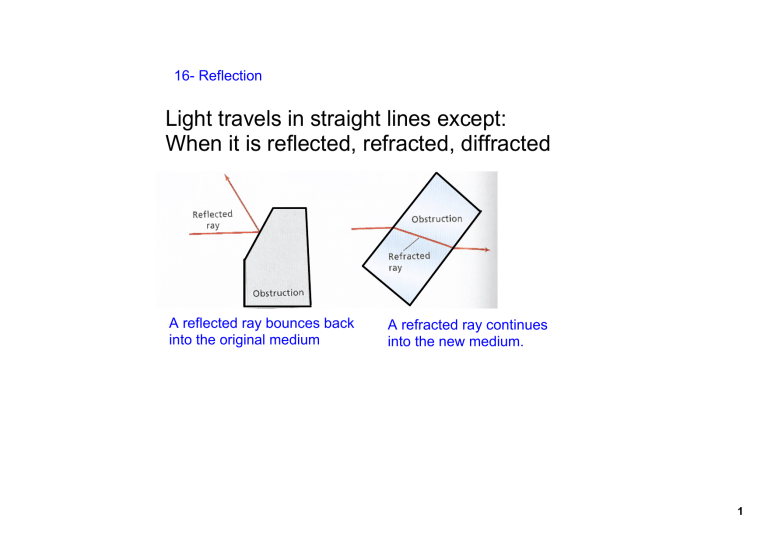
16 Reflection
Light travels in straight lines except:
When it is reflected, refracted, diffracted
A reflected ray bounces back into the original medium
A refracted ray continues into the new medium.
1
Specular (Regular) reflection from a smooth surface (like a mirror).
Diffuse reflection from an irregular surface.
2
Normal: Line drawn perpendicular to the surface.
Angle of incidence = angle between the incident ray and the normal
Angle of reflection = angle between the reflected ray and the normal
Reflection:
Angle of incidence = Angle of reflection
3
Example: surface. What is the angle of reflection?
4
Plane (flat) mirror image distance (di) = object distance (do)
5
6
Curved mirrors:
Concave (converging)
Convex (diverging)
Concave Mirror:
7
Concave Mirror
Find the image by ray tracing:
1. A ray parallel to the principal axis is reflected through the focus.
2. A ray through the center of curve is reflected back on itself.
3.A ray though the focus is reflected parallel to the principal axis.
The image is located at the intersection of the reflected rays.
8
Concave Mirror d o
= object distance d i
= image distance
f = focal length
1/d o
+ 1/d i
= 1/f h o
/h i
= d o
/d i
9
Convex Mirror:
Rays:
1. A ray parallel to the axis is reflected so it appears to have come from the focus.
2. A ray going toward the focus is reflected parallel to the axis.
3. A ray toward the center of curve is reflected back on itself.
10
Convex Mirror d o
= object distance d i
= image distance
f = focal length
1/d o
+ 1/d i
= 1/f AND h o
/h i
= d o
/d i
BUT the focal length is negative because the focus is virtual.
11
12
